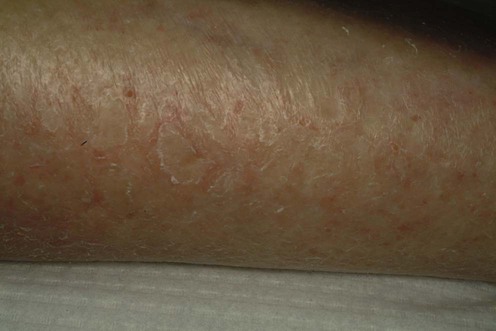Singh F, Rudikoff D. Am J Clin Dermatol 2003; 4: 177–88. Xerosis is one of the more common causes of itch in HIV infection and AIDS.
Xerosis

Specific investigations
HIV-associated pruritus: etiology and management.
![]()
Stay updated, free articles. Join our Telegram channel

Full access? Get Clinical Tree







